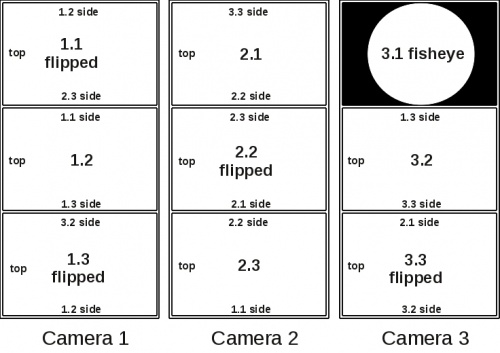Difference between revisions of "Eyesis workflow"
From ElphelWiki
(→2. Processing panorama) |
|||
| Line 16: | Line 16: | ||
==Workflow== | ==Workflow== | ||
| − | ====1 | + | ==== 1. Processing panorama ==== |
| − | |||
| − | |||
| − | |||
| − | |||
| − | |||
Stitching scripts [http://community.elphel.com/files/sample_stitch_scripts/ samples]. | Stitching scripts [http://community.elphel.com/files/sample_stitch_scripts/ samples]. | ||
Revision as of 14:10, 30 November 2010
Contents
[hide]Preface
The following page describes the Eyesis camera post-processing procedures.
Camera Output
- 3x 500GB HDDs (or 3x 256GB SSD HDDs), each containing *.mov files from 3x 3-sensor cameras (a single HDD is connected to a camera).
- Each frame in a *.mov file is a combination of frames from 3 sensors glued vertically.
- The cameras are numbered - 1,2,3. The sub images are [1.1, 1.2, 1.3], [2.1, 2.2, 2.3], [3.1, 3.2, 3.3]. 3.1 is the fisheye image.
- The frames in *.movs are indexed.
- Single frame format is JP4.
- Corresponding frames have the same time stamps generated by the 1st camera.
- The 1st camera frames are geotagged.
Post-Processing Setup
- HDDs are connected to a processing PC with SATA cables
Workflow
1. Processing panorama
Stitching scripts samples.
- JP4 images are extracted and converted to DNGs from *.MOVs by the program movie2dng.
- Dcraw and the Hugin tools are used for stitching (a template *.pto for it should be created once).
